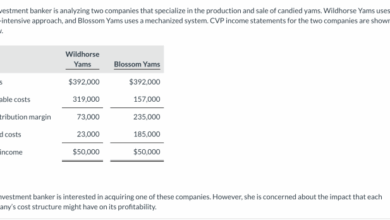VoIP and the New Telecommunications Industry Revolutionizing Communication
VoIP and the new telecommunications industry are reshaping how we connect. From its humble beginnings as a niche technology, VoIP has rapidly evolved into a powerful force, transforming traditional telecom models and driving innovation in modern communication. This journey explores the profound impact of VoIP, examining its influence on businesses, global markets, and accessibility for all.
The evolution of VoIP has been remarkable, moving from a simple phone alternative to a sophisticated platform integrated with video conferencing, instant messaging, and other cutting-edge technologies. This transformation has significantly altered the landscape of business communication, remote work, and global connectivity. This exploration delves into the technological intricacies, market trends, and the future of this revolutionary communication model.
VoIP’s Impact on Traditional Telecom

The telecommunications industry has undergone a dramatic transformation in recent decades, moving from a largely analog and geographically constrained system to a global, digital network. This shift is largely due to the rise of Voice over Internet Protocol (VoIP), which has disrupted traditional business models and forced a fundamental re-evaluation of how telecommunications are delivered and consumed.VoIP’s emergence has profoundly reshaped the landscape, impacting everything from pricing strategies to regulatory frameworks.
Understanding this evolution is crucial to appreciating the current state of the telecommunications industry and anticipating future trends.
Historical Overview of Traditional Telecommunications
Traditional telecommunications, predating the digital age, relied heavily on physical infrastructure like copper wires and landline networks. Early systems were localized, with calls routed through central switching stations based on physical proximity. The development of the telephone network marked a significant step forward in connecting people across distances. Technological advancements like the introduction of the transistor and integrated circuits further improved the reliability and efficiency of these systems.
This evolution ultimately resulted in a highly regulated and vertically integrated structure where companies owned the entire communication pipeline, from the infrastructure to the end-user service.
Key Changes Brought About by VoIP
The introduction of VoIP revolutionized communication by leveraging the internet’s existing infrastructure. This approach enabled significantly lower communication costs due to the internet’s global reach. The widespread adoption of broadband internet, combined with advances in compression technology, made high-quality voice transmission over the internet possible. This drastically lowered the cost of international calls and facilitated a new era of global communication.
The emergence of VoIP also spurred the rise of cloud-based communication platforms, offering greater flexibility and scalability than traditional models.
Comparison of Business Models
Traditional telecom companies typically operated as vertically integrated entities, controlling the infrastructure and service provision. Their revenue models were heavily reliant on high call volume and often included substantial capital expenditures for network maintenance. VoIP providers, on the other hand, often adopted a more agile and decentralized model. Their revenue streams could encompass subscription fees, usage-based charges, or partnerships with other service providers.
Challenges Faced by Traditional Telecoms
The rise of VoIP presented significant challenges for traditional telecom companies. Their substantial investment in physical infrastructure became less competitive as VoIP providers leveraged existing internet networks. Competition from VoIP providers created pressure to lower prices, and customers were drawn to the often more affordable rates. Traditional companies faced a significant shift in their cost structure, forcing them to adapt to a new competitive environment.
Evolving Regulatory Landscape Surrounding VoIP
The regulatory landscape surrounding VoIP has evolved significantly as its usage grew. Initially, regulatory bodies often struggled to adapt to the new paradigm. The need for clearer guidelines and regulations around interoperability, data security, and pricing practices emerged as VoIP gained widespread adoption. Regulatory bodies have had to contend with the challenge of balancing the need to protect consumers with the imperative to promote innovation and competition.
Key Differences Between Traditional and VoIP Communication Methods
| Feature | Traditional Telecommunication | VoIP |
|---|---|---|
| Infrastructure | Physical networks (copper wires, landlines) | Internet Protocol (IP) networks |
| Cost | Generally higher, especially for international calls | Potentially lower, especially for international calls |
| Scalability | Limited by physical infrastructure | Highly scalable through the internet |
| Accessibility | Typically tied to physical locations | Accessible globally via internet connectivity |
| Security | Potentially more susceptible to physical interference | Security measures depend on the network and VoIP provider |
VoIP’s Role in Modern Communication
VoIP, or Voice over Internet Protocol, has revolutionized the telecommunications landscape, transforming how we communicate both personally and professionally. Its adaptability and cost-effectiveness have made it a crucial component of modern communication, enabling businesses and individuals to connect globally with unprecedented ease and efficiency. The evolution of VoIP extends beyond simple phone calls, now seamlessly integrating with various other technologies to provide a richer and more comprehensive communication experience.VoIP has moved beyond simple phone calls, enabling diverse applications and transforming business communication.
Its versatility allows businesses to streamline operations, enhance customer interactions, and foster remote collaboration, creating a more connected and productive work environment. This integration with other technologies has broadened the capabilities of VoIP, enhancing its practicality and relevance in today’s interconnected world.
Diverse Applications of VoIP in Modern Communication
VoIP is no longer confined to traditional phone calls. Its flexibility allows for a wide array of applications, from personal communication to complex business interactions. These applications leverage the power of the internet to connect individuals and organizations in innovative ways. Examples include international calls at significantly lower rates than traditional phone services, business-to-business communication platforms, and even specialized applications for specific industries, such as healthcare or education.
Transforming Business Communication
VoIP has fundamentally reshaped business communication. Businesses leverage VoIP for internal communication, customer service, and remote collaboration. This technology facilitates instant communication between employees across different locations, enabling faster decision-making and improved operational efficiency. For example, a sales team can use VoIP to communicate with clients in real-time, regardless of their geographical location. This enhances customer service and strengthens business relationships.
VoIP is revolutionizing the telecommunications industry, offering flexible and cost-effective solutions. This rapid evolution is similar to the advancements seen in AI, as highlighted by the upcoming grandmaster and computer battle in the final match. This final match showcases the potential of AI in complex strategic games, which mirrors the increasing complexity and sophistication in the new VoIP-driven telecommunications landscape.
Ultimately, both fields demonstrate a push towards innovation and efficiency.
Integration with Other Technologies
VoIP seamlessly integrates with other technologies to create a more comprehensive communication ecosystem. One key integration is with video conferencing, allowing for real-time visual communication. This capability enhances collaboration and strengthens relationships between colleagues, clients, and partners, fostering a more personal and interactive experience. Furthermore, VoIP can be integrated with instant messaging platforms, enabling quick communication and information exchange.
This combined approach provides businesses with a powerful suite of tools for efficient communication.
Security Considerations in VoIP Communications
Security is a paramount concern with VoIP communications. The reliance on the internet introduces vulnerabilities that must be addressed. Robust security measures, such as encryption protocols and secure network infrastructure, are crucial to protect sensitive business data and personal information. Data encryption safeguards transmitted voice and video data, while strong passwords and access controls prevent unauthorized access.
Importance of VoIP in Remote Work Scenarios
The rise of remote work has amplified the importance of VoIP. VoIP provides a vital connection for remote teams, enabling seamless communication and collaboration. It facilitates virtual meetings, team projects, and customer interactions, keeping remote employees engaged and connected with their colleagues and clients. This technology is essential for maintaining productivity and fostering a sense of community in a distributed work environment.
Benefits and Drawbacks of Different VoIP Platforms
| VoIP Platform | Benefits | Drawbacks |
|---|---|---|
| RingCentral | Robust features, excellent customer support, scalable for growth, strong integration with other business apps | Can be expensive for small businesses, the learning curve for some features can be steep |
| GoToMeeting | Easy to use, user-friendly interface, good for quick meetings and collaborations, affordable options available | Limited customization options, features might not be as robust as some enterprise-level platforms |
| Zoom | Highly versatile, very popular, widely used for both personal and business use, excellent video conferencing capabilities | Security concerns have been raised, potential for privacy issues, less focus on business-specific features |
VoIP platforms vary in their features, pricing, and suitability for different businesses. This table highlights some key distinctions, offering a comparative overview for businesses considering VoIP solutions. Each platform has advantages and disadvantages that must be carefully evaluated based on specific needs and budget constraints.
The Future of VoIP and Telecommunications
The telecommunications landscape is undergoing a rapid transformation, driven by innovative technologies and evolving user expectations. VoIP, initially a disruptor to traditional telecom, is now poised to integrate further with other communication channels and leverage emerging technologies to deliver even more sophisticated and personalized experiences. This evolution promises a future where communication is seamless, efficient, and highly adaptable to individual needs.The future of VoIP is intricately linked to the advancements in the broader telecommunications industry.
5G networks, for instance, are paving the way for significantly improved bandwidth and latency, making VoIP calls even more crystal clear and reliable, even in demanding environments. The emergence of AI and machine learning is set to revolutionize not just the functionality but also the personalization of VoIP services.
Emerging Trends in Telecommunications
The telecommunications industry is experiencing a convergence of technologies, moving beyond traditional voice and data services. Internet connectivity is becoming increasingly ubiquitous, enabling the proliferation of new communication platforms and applications. This is further fueled by the increasing demand for personalized, intuitive, and seamless experiences. The emphasis is shifting towards user-centric solutions that cater to diverse needs and preferences.
Impact of 5G and Advanced Technologies on VoIP
G networks are poised to significantly enhance the VoIP experience. The increased bandwidth and reduced latency offered by 5G will translate to superior audio quality and smoother video conferencing. This is crucial for real-time applications like video conferencing, remote collaboration, and gaming. Furthermore, technologies like edge computing are likely to become increasingly important, processing data closer to the user and improving response times for VoIP services.
Role of Artificial Intelligence in Shaping the Future of VoIP
AI is poised to play a pivotal role in optimizing and personalizing VoIP services. AI-powered chatbots can handle customer service inquiries, schedule meetings, and even translate languages in real-time during calls. Predictive analytics can identify potential issues and proactively address them before they impact the user experience. For example, AI can analyze call patterns to suggest optimal call times for specific individuals or groups.
Innovative VoIP Services Likely to Emerge
The future holds a range of innovative VoIP services. Imagine VoIP services seamlessly integrated with smart home devices, allowing for voice control of lights, thermostats, and security systems. Further integration with augmented reality (AR) and virtual reality (VR) technologies could create immersive and interactive communication experiences. Imagine attending a conference or meeting in a virtual environment, interacting with participants in a shared virtual space.
Convergence of VoIP and Other Communication Channels
The lines between communication channels are blurring. VoIP is likely to integrate more closely with messaging platforms, video conferencing tools, and social media. This convergence will create a more unified communication ecosystem, allowing users to seamlessly transition between different communication modes. Imagine sending a quick message, transitioning to a video call, and then scheduling a follow-up meeting, all within the same integrated platform.
Potential VoIP Service Offerings
| Service Type | Description | Example |
|---|---|---|
| Smart Home Integration | VoIP integrated with smart home devices for voice control. | Controlling lights, thermostats, and security systems through voice commands. |
| Augmented Reality/Virtual Reality Integration | Immersive communication experiences using AR/VR technologies. | Attending virtual conferences in a shared virtual space. |
| AI-Powered Customer Service | AI-driven chatbots and support for handling customer inquiries and scheduling. | Scheduling meetings, answering questions, and providing personalized recommendations. |
| Personalized Call Management | AI-driven suggestions for optimal call times and personalized call routing. | Receiving suggestions for the best time to call a specific individual based on their schedule. |
VoIP and the Global Market
VoIP technology has revolutionized communication, breaking down geographical barriers and fostering global connectivity. This expansion into international markets, however, presents unique challenges and opportunities for providers, influenced by varying regulatory landscapes, cultural nuances, and technological infrastructure. This exploration delves into the global adoption of VoIP, highlighting key regional differences, and the specific considerations for VoIP providers operating in diverse international environments.The global adoption of VoIP has been remarkable, fueled by increasing internet penetration and affordability.
Businesses and individuals alike are recognizing the cost-effectiveness and flexibility of VoIP solutions. However, the uneven distribution of internet access across regions necessitates careful consideration for VoIP providers targeting different markets.
Global VoIP Penetration Rates
VoIP adoption varies significantly across regions, often mirroring the levels of internet infrastructure development and digital literacy. Developed nations, with robust internet infrastructure, generally exhibit higher VoIP penetration rates. Emerging markets, while showing substantial growth, face challenges in achieving widespread adoption due to varying levels of internet access and affordability.
Regional Comparisons
North America and Western Europe typically lead in VoIP penetration due to advanced telecommunications infrastructure and consumer familiarity with online communication tools. Asia, with its large and rapidly growing populations, presents a substantial potential market for VoIP, although disparities in internet access across the region need careful consideration. Africa and South America are experiencing a burgeoning market for VoIP, driven by a need for cost-effective communication solutions.
Challenges and Opportunities for VoIP Providers
International VoIP providers face numerous challenges, including varying regulatory frameworks, technical compatibility issues, and cultural differences in communication styles. These challenges must be addressed to successfully navigate international markets. Opportunities abound, however, for VoIP providers that can tailor their services to the specific needs and preferences of diverse global markets. For instance, offering multilingual support, understanding local communication customs, and developing culturally sensitive marketing strategies can significantly increase success rates.
Impact of Cultural Differences
Cultural differences play a crucial role in VoIP adoption. Communication styles, preferences for technology, and the understanding of online etiquette can vary significantly between countries. For example, direct communication might be preferred in one culture, while indirect communication might be more appropriate in another. VoIP providers must be sensitive to these differences and tailor their offerings to accommodate these nuances to maximize adoption rates.
VoIP is revolutionizing the telecommunications industry, offering flexibility and cost-effectiveness. Just as NASA’s stunning imagery of Earth from space provides a new perspective, nasa looking back at earth reminds us of the vast potential for innovation in communication. This technological leap forward, like the intricate satellite networks, is mirroring the advancements in VoIP systems, shaping the future of global connections.
VoIP Regulations and Standards
The regulatory landscape surrounding VoIP varies significantly across countries. Some countries have stringent regulations regarding data privacy, call routing, and international communications. This necessitates careful compliance with local regulations. A table illustrating this variation follows:
| Country | VoIP Regulations | Standards |
|---|---|---|
| United States | Generally less stringent, focusing on consumer protection | Standards largely aligned with global standards |
| European Union | Strict regulations on data privacy and security | Strict adherence to EU directives |
| China | Highly regulated, with government oversight | Standards often aligned with domestic needs |
| India | Regulations are evolving, with a focus on consumer protection | A blend of global and domestic standards |
VoIP providers need to thoroughly research and understand the regulatory landscape in each target market to ensure compliance and avoid potential legal issues.
Successful VoIP Deployments, Voip and the new telecommunications industry
Several VoIP deployments across various countries have proven successful. These deployments often highlight the importance of adapting services to local needs and understanding cultural nuances. Examples include the use of VoIP for remote education in rural areas of developing countries and the expansion of international business communication through VoIP platforms.
VoIP and Business Communication
VoIP, or Voice over Internet Protocol, is revolutionizing business communication. Its flexibility and cost-effectiveness offer significant advantages over traditional landline systems. This shift towards VoIP is not just about saving money; it’s about streamlining workflows, enhancing collaboration, and ultimately, improving customer service interactions. This transformation is affecting businesses of all sizes, from startups to large corporations.VoIP solutions empower businesses to connect with customers and colleagues across geographical boundaries, facilitating seamless communication and collaboration, regardless of location.
The dynamic nature of VoIP enables businesses to adapt to changing market demands and technological advancements, fostering agility and responsiveness.
Improving Business Communication Efficiency
VoIP systems leverage the internet to transmit voice calls, enabling businesses to connect employees and customers efficiently. This streamlined communication approach can lead to faster response times, reduced delays, and improved overall communication effectiveness. By integrating VoIP into existing communication platforms, businesses can consolidate multiple communication channels into one system, enhancing efficiency and reducing operational costs.
Cost-Saving Advantages of VoIP Solutions
VoIP solutions often offer substantial cost savings compared to traditional telephony systems. Reduced long-distance charges, elimination of expensive hardware maintenance, and lower monthly fees are key advantages. Many VoIP providers offer flexible plans, allowing businesses to adjust their communication needs based on usage, which further optimizes cost efficiency. For example, businesses can scale up or down their VoIP services as their needs evolve, avoiding unnecessary expenses.
Enhancing Collaboration Among Teams
VoIP facilitates seamless collaboration among teams. Features like conferencing and instant messaging integrated with VoIP platforms create dynamic environments where employees can easily connect and share information regardless of their location. This seamless connectivity can boost productivity by streamlining communication and promoting team cohesion. For instance, remote teams can engage in real-time discussions, share documents, and collaborate on projects effectively through VoIP-enabled platforms.
Role of VoIP in Customer Service Interactions
VoIP can significantly enhance customer service interactions. By enabling businesses to manage calls and customer interactions efficiently, VoIP allows for better response times, greater accessibility, and improved customer satisfaction. Businesses can provide customers with multiple communication channels, such as phone calls, instant messaging, and email, through a unified VoIP platform. This comprehensive approach leads to improved customer experience and retention.
Key Features of Different VoIP Solutions for Various Business Sizes
| Business Size | VoIP Solution Type | Key Features |
|---|---|---|
| Small Businesses | Cloud-based VoIP | Scalable, cost-effective, easy setup, often includes basic features like call forwarding, voicemail, and conferencing. |
| Medium Businesses | Hybrid VoIP | Combines cloud-based and on-premise solutions, offering greater flexibility and customization options. Often includes advanced features like call recording, advanced analytics, and integrations with CRM systems. |
| Large Businesses | On-premise VoIP or Custom VoIP Solutions | Provides high security, full control over the system, and highly customized features. This is often a more expensive and complex setup requiring dedicated IT support and maintenance. |
VoIP solutions cater to different business needs and budgets, offering a variety of features and functionalities. The table above illustrates the key characteristics of different VoIP solutions, highlighting their suitability for businesses of varying sizes.
Integrating VoIP into Existing Business Workflows
Businesses can seamlessly integrate VoIP into their existing workflows. VoIP solutions often offer integrations with various business applications, including customer relationship management (CRM) systems, project management software, and accounting platforms. By integrating VoIP with existing systems, businesses can streamline processes, improve efficiency, and enhance productivity. For example, a VoIP system can automatically route calls to the appropriate team members based on predefined criteria, improving response times and overall customer service.
Security and Reliability in VoIP: Voip And The New Telecommunications Industry
VoIP, while revolutionizing communication, faces unique security and reliability challenges. Traditional telephony’s robust infrastructure, often shielded by physical lines, contrasts with VoIP’s reliance on the internet, a public network vulnerable to various attacks. This inherent vulnerability necessitates a multi-layered approach to ensure both the security and reliability of VoIP services.Modern VoIP systems must address both the potential for malicious actors to intercept or manipulate calls and the inherent instability of the internet itself.
Reliable VoIP requires not only strong security protocols but also robust network infrastructure to maintain consistent connectivity. Ensuring both security and reliability is crucial for widespread adoption and trust in VoIP technology.
Security Threats and Vulnerabilities
VoIP systems are susceptible to a range of security threats. These include eavesdropping, where unauthorized parties can intercept calls; man-in-the-middle attacks, where attackers insert themselves into the communication channel; and denial-of-service attacks, which overload the system to prevent legitimate users from accessing services. Phishing attacks targeting VoIP accounts and credential theft are also significant concerns. These threats can compromise sensitive information, disrupt communications, and damage reputation.
Measures to Enhance VoIP Security
Strengthening VoIP security involves implementing various measures. These include using strong encryption protocols to protect call data, employing secure authentication methods to verify user identities, and implementing intrusion detection systems to monitor for and respond to potential threats. Employing firewalls and network segmentation to limit the scope of any potential breaches is also essential.
Security Protocols in Modern VoIP Systems
Modern VoIP systems often incorporate a range of security protocols to mitigate risks. Transport Layer Security (TLS) is a widely used protocol that encrypts communication channels, making it difficult for attackers to intercept sensitive information. Secure Real-time Transport Protocol (SRTP) is specifically designed for real-time communication, providing encryption and authentication to protect voice calls. These protocols play a crucial role in maintaining confidentiality and integrity of VoIP communications.
Ensuring VoIP Reliability
Ensuring the reliability of VoIP services is crucial for a seamless user experience. Reliable VoIP requires stable network connections, low latency, and minimal packet loss. Robust network infrastructure is paramount to achieve these goals. Factors such as network congestion, poor internet quality, and equipment failures can disrupt VoIP services.
VoIP is rapidly reshaping the telecommunications landscape, offering exciting possibilities for businesses and consumers alike. However, the vulnerabilities in the underlying networks, like those exposed by the recent Cisco router flaw, networks under attack following cisco router flaw , highlight the crucial need for robust security measures. This emphasizes the critical importance of secure network infrastructure for the future of VoIP and the new telecommunications industry.
Network Infrastructure for VoIP Reliability
The quality of network infrastructure directly impacts VoIP reliability. A stable network connection with low latency and minimal packet loss is essential for high-quality voice calls. Employing robust routers, switches, and servers is necessary to maintain optimal performance. Redundancy in network infrastructure and careful monitoring are crucial to minimize service disruptions.
Security Measures and Effectiveness
| Security Measure | Effectiveness | Description |
|---|---|---|
| TLS Encryption | High | Encrypts communication channels, protecting data from eavesdropping. |
| SRTP Encryption | High | Specifically designed for real-time communication, ensuring encryption and authentication. |
| Firewall Protection | Moderate | Acts as a barrier against unauthorized access, but effectiveness depends on configuration and attack sophistication. |
| Intrusion Detection Systems (IDS) | Moderate | Monitors network traffic for malicious activity, allowing for timely response. |
| Strong Authentication | High | Verifies user identities, preventing unauthorized access to accounts. |
VoIP and Accessibility
VoIP, or Voice over Internet Protocol, is rapidly transforming the telecommunications landscape, offering numerous advantages over traditional landline systems. Beyond its efficiency and cost-effectiveness, VoIP presents unique opportunities to enhance accessibility for individuals with disabilities. This shift in communication technology allows for the integration of assistive technologies and tailored features, making communication more inclusive and empowering.VoIP systems, by their very nature, are inherently adaptable.
This adaptability allows for the integration of accessibility features, which can bridge communication gaps and empower individuals with disabilities to participate fully in the digital world. The fundamental principle of universal design is critical in VoIP development to ensure that these features are seamlessly integrated into the core functionality, rather than being add-ons.
Accessibility Features of VoIP Systems
VoIP platforms can incorporate various accessibility features to cater to diverse needs. These include text-to-speech and speech-to-text functionalities, allowing users to interact with the system through alternative input and output methods. Visual cues and alternative communication methods, such as braille displays or screen readers, can be integrated into the VoIP interface, ensuring that users with visual impairments can effectively navigate and utilize the system.
Moreover, VoIP can accommodate users with hearing impairments through real-time captioning and sign language interpretation options.
Overcoming Communication Barriers with VoIP
VoIP can be instrumental in overcoming communication barriers for individuals with disabilities. For instance, individuals with speech impairments can use text-to-speech functionality to communicate effectively, enabling them to participate in conversations and meetings with ease. Sign language interpretation integrated into VoIP can facilitate communication between individuals who are deaf or hard of hearing, fostering inclusion and understanding in diverse communities.
Additionally, VoIP can provide communication support to individuals with mobility impairments, enabling them to participate in conferences and other activities remotely, reducing the physical barriers to communication.
VoIP Solutions for People with Disabilities
Numerous VoIP solutions are specifically designed to cater to the needs of individuals with disabilities. These solutions often integrate assistive technologies, allowing for customized communication experiences. For example, some VoIP providers offer features that enable users with visual impairments to navigate the interface using screen readers and alternative input methods. Other solutions may provide real-time captioning or sign language interpretation for users with hearing impairments, ensuring inclusive communication.
Moreover, some VoIP platforms provide features to accommodate users with speech impairments or mobility issues.
Importance of Universal Design Principles in VoIP Development
The principles of universal design are crucial in VoIP development to ensure that the technology is accessible to all users, regardless of their abilities. These principles emphasize the creation of interfaces and systems that are usable by people with diverse abilities and needs. This approach requires careful consideration of the diverse needs of users, including those with disabilities, throughout the entire development process.
Universal design principles help to create a truly inclusive and accessible communication environment.
VoIP in Remote and Underserved Communities
VoIP can revolutionize communication in remote and underserved communities. In areas with limited or no traditional telecommunication infrastructure, VoIP can provide affordable and reliable access to voice and video communication. This access can be crucial for education, healthcare, and economic opportunities. For example, in rural areas, VoIP can connect schools to distant educational resources, enabling students to access high-quality learning opportunities.
Table: Accessibility Features Offered by Various VoIP Providers
| VoIP Provider | Text-to-Speech | Speech-to-Text | Real-time Captioning | Sign Language Interpretation | Screen Reader Compatibility |
|---|---|---|---|---|---|
| Provider A | Yes | Yes | Yes | No | Yes |
| Provider B | Yes | Yes | Yes | Yes | Yes |
| Provider C | Yes | No | No | Yes | Yes |
Note: This table is illustrative and not exhaustive. Features and availability may vary depending on specific provider plans and subscriptions.
Final Thoughts

In conclusion, VoIP is not just a technology; it’s a catalyst for change in the telecommunications industry. Its impact on traditional models, integration with modern tools, and global reach are undeniable. The future promises further convergence and innovation, with VoIP continuing to shape how we connect, collaborate, and conduct business globally. The key takeaway is that VoIP’s future is bright, promising continued evolution and an increasingly integrated role in our daily lives.







